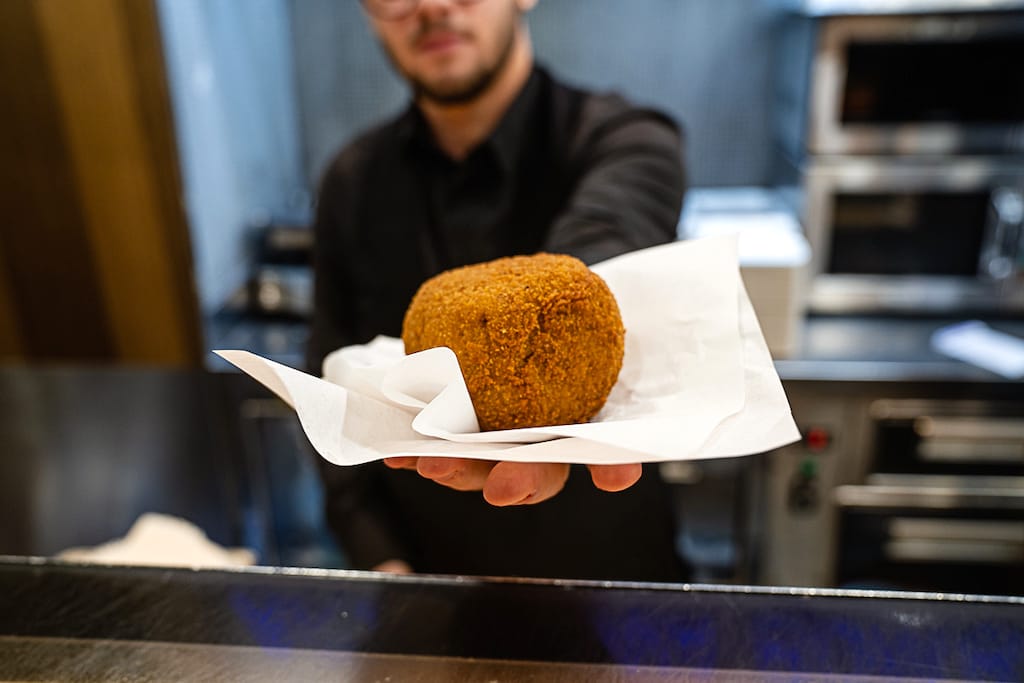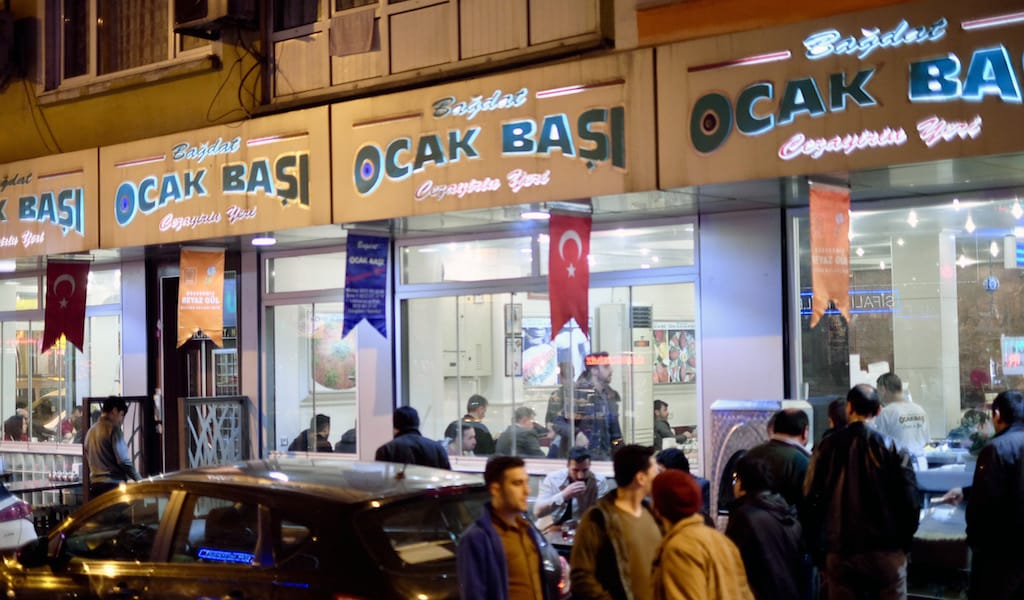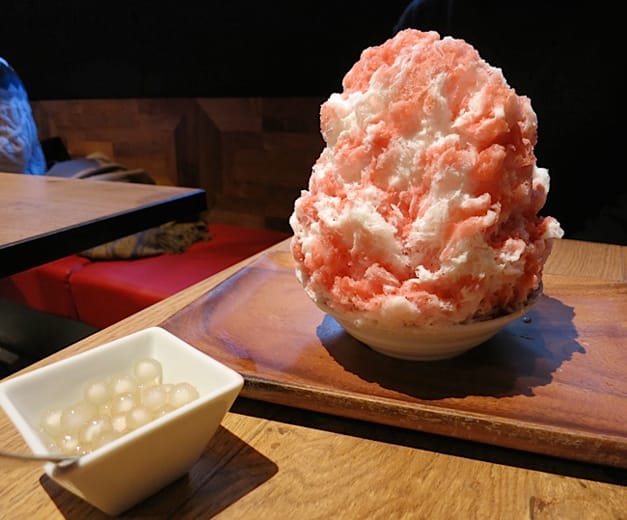It’s hard to choose among all of Sicily’s justifiably famous foods, but if we had to pick one as the most iconic and beloved it would have to be arancine. These small rice balls, filled with enticing ingredients, coated in a crispy breading and deep fried, are a true culinary masterpiece that embodies the passion and creativity of Sicilian cuisine.
Traditionally, arancine were prepared in two flavors: meat and “butter.” Meat arancine are stuffed with meat sauce and peas. Butter arancine, despite the name, are actually filled with mozzarella cheese, cooked ham and béchamel sauce. Over the years, however, local rosticceria – fry shops selling the treat – have added different variations. Today, you can find spots offering arancine stuffed with everything from sausage to swordfish, spinach, “alla norma” (with fried eggplant and tomato sauce) and even Nutella – a far cry from the historic roots of this famous dish.
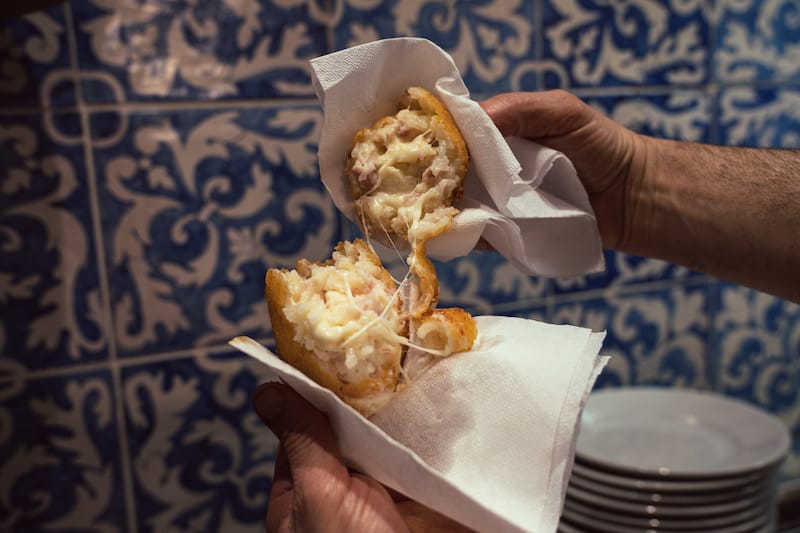
Origins
According to historians, Sicilian arancine date back to the early Middle Ages and the island’s Arab rule over a thousand years ago. The Arab domination, which ran from the 9th to the 11th century AD, left significant marks on Sicilian culture: not only architecture and grammar, but also culinary traditions. Among these, the arancina is perhaps the most significant legacy, developing into a true culinary icon representing Sicily around the world.
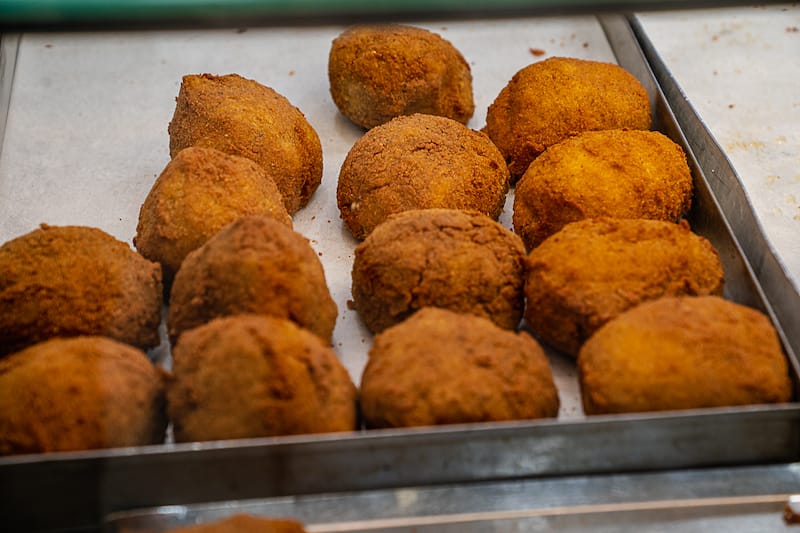
Arancine’s origin is thought to date back to the Arab period both because of historical records found, but also because of the ingredients: The rice used is flavored with saffron, which was brought to Sicily by the Arabs. They also used to name dishes after fruits: The name “arancina” in fact comes from “orange,” with which Sicily is blessed. We have to wait until the 19th century, however, to find traces of arancine in dictionaries and cookbooks, an indication that the current recipe is probably a more modern invention.
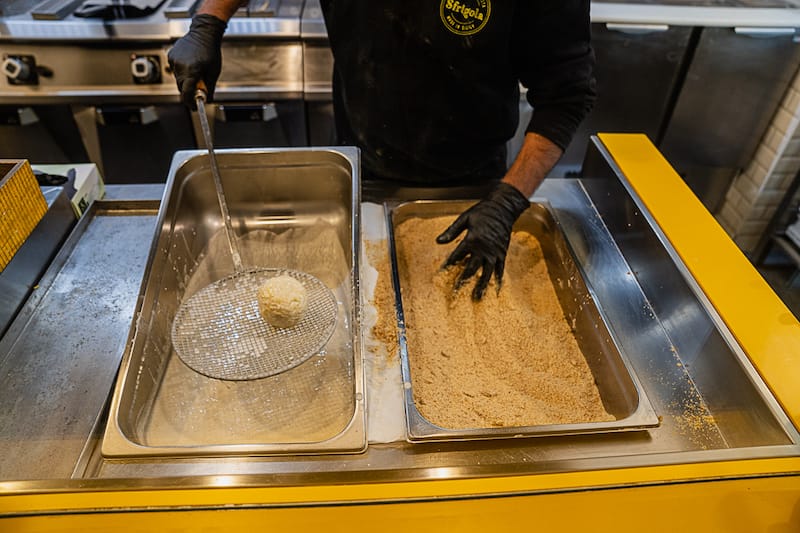
Palermo vs. Catania
To understand the importance of arancine in Sicily, it’s worth discussing the very real feud that exists between Palermo and Catania concerning the dish and its etymology. In Palermo it is called arancina, in the feminine, while in Catania (and the rest of Sicily) arancino, in the masculine. The Palermo people defend their argument by claiming that they are called arancina because the name comes from the oranges and because Arab rule covered the western part of the island. In Catania, not only the name but even the shape changes. While in Palermo arancine have a more rounded shape, in Catania they are conical. In fact, they are said to recall Mount Etna, the majestic volcano that dominates the Catania landscape. Eating one of these pointed arancine from the tip will give off hot steam reminiscent of the smoke given off by the volcano, while the meat-sauce filling symbolizes gushing lava.
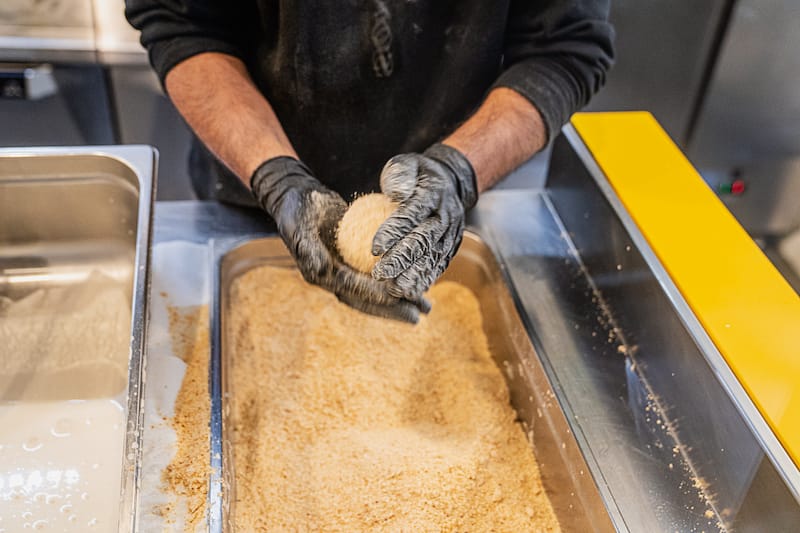
The debate is so heated that even the Accademia della Crusca, Italy’s most important and longest-running linguistic institution, which has been studying and preserving the Italian language since 1582, has spoken on the issue. The consensus?
Both the feminine and masculine forms are correct. The point is to eat them, because either way, they are delicious.
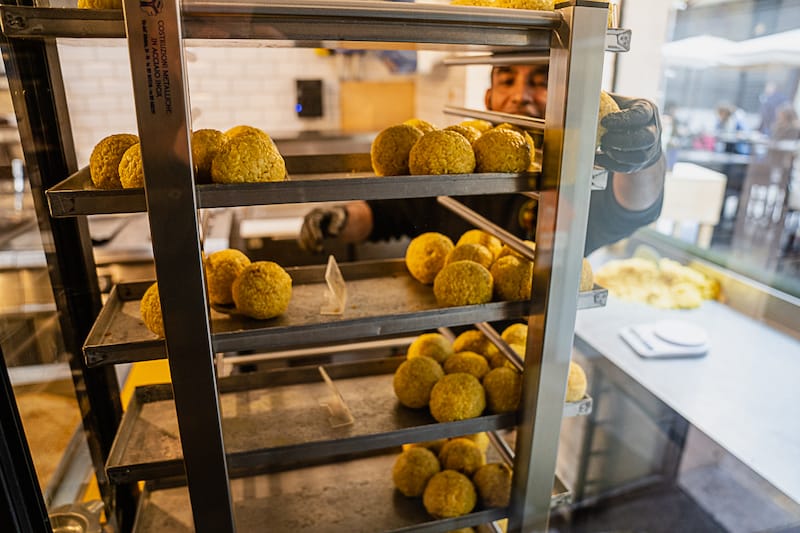
Saint Lucia
Santa Lucia was a saint who lived in Syracuse, Sicily, between the years 200 and 300 AD, but it was in the 17th century that her miracle occurred. In 1646, a severe famine struck the city of Palermo, leaving the population in the grip of starvation, until on December 13 of that year, a ship loaded with grains arrived at the port and managed to feed the city’s inhabitants. The arrival of the grain-laden ship was considered a real miracle attributed to Saint Lucy, whose name day falls on December 13. The grain was not turned into flour, but was immediately boiled and consumed to soothe the hunger of the Palermitans. Since then, every December 13, it has been customary to abstain from the consumption of flour and bread in observation of Saint Lucia. Bread and pasta are traditionally replaced by arancine, panelle (chickpea fritters) and cuccia, a dessert made from boiled whole wheat and mixed with sheep’s ricotta, custard and chocolate, enriched with nuts and candied fruit. In fact, bakeries remain closed while very long lines of customers form in front of the fry shops waiting for arancine, which are fried by the thousands each December 13.
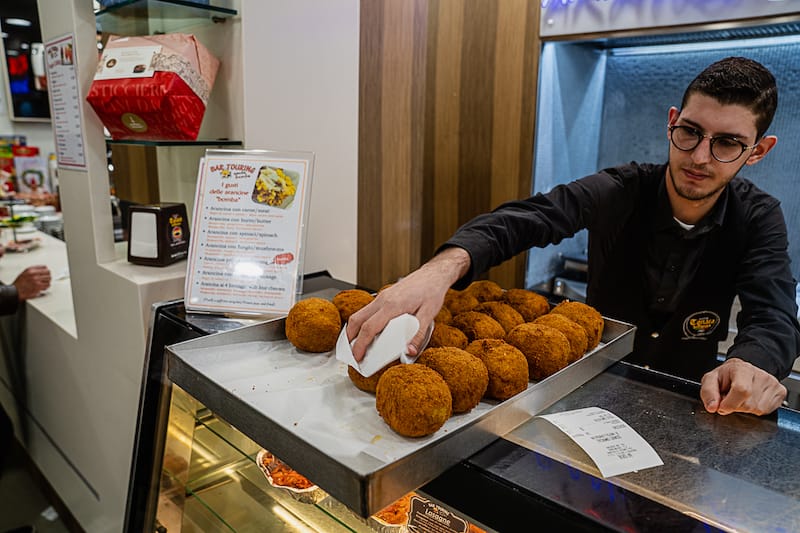
Where to Eat Arancine
We have selected four places in Palermo where you can enjoy a great arancina. Here, you’ll find both historic bars and newer spots pushing for innovation. The most important thing to remember is that arancine should be enjoyed hot and crispy. That’s why we prefer purveyors that produce a large quantity of arancine, guaranteeing continuous freshness, or those that fry them on the spot.
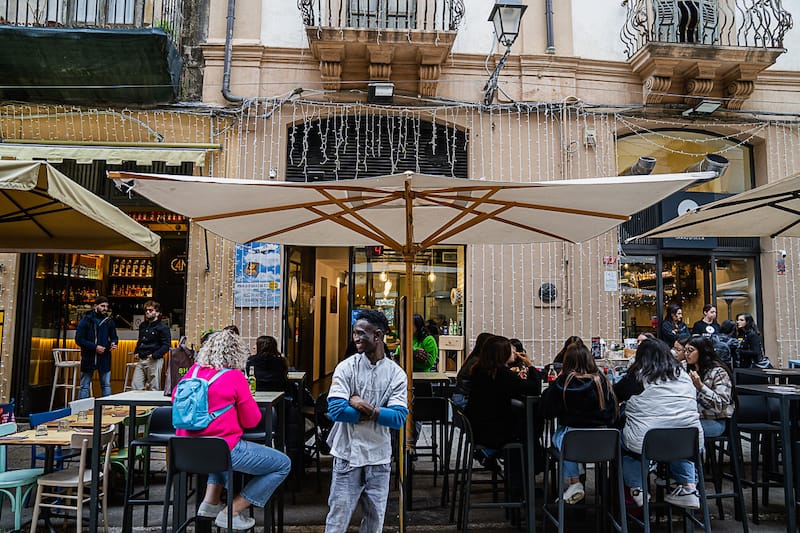
Massaro is a typical traditional Palermo bar run by the Massaro family. It is located on Via Basile, right across the street from the University of Palermo, from where it has fed several generations of students. At Massaro’s every morning, a line forms of students, workers and locals waiting their turn to eat breakfast. Here you will find the true Palermo bar experience. The arancine are baked so frequently that the product is guaranteed to be fragrant and crispy.
Bar Touring began its operation in 1959, when Antonino Genovese opened the first location on Via Lincoln, just across the street from Villa Giulia. Today, the bar is run by Alessandro and Francesco, who have opened two other locations on Via De Gasperi and in Mondello. Bar Touring, also a historic bar, is known in town for the size of its arancine, which are called “arancine bomba.” Considerably larger than the average arancine, a single arancina bomb at Bar Touring weighs nearly 400 grams.
Focacceria Al Massimo is located in front of the Massimo Theater and is run by Pasquale and his wife Maria Teresa. Born as a focacceria, over the years it has become a trattoria that prepares excellent appetizers and typical pasta dishes. But they have not forgotten their origins, continuing to prepare arancine by frying them on the spot to ensure a dry and crispy breading, which is essential to enjoy all the goodness of the arancina.
Sfrigola is a new player in town. Opened in 2017 by brothers Adriano and Emanuele Pizzurro, it is trying to innovate the arancine industry. After an initial location in Corso Calatafimi, they opened a second location in town, in the central Via Maqueda, as well as three other locations in Cefalù, Erice and San Vito lo Capo. Sfrigola’s special feature, in addition to a large number of flavors to choose from besides the classic ragù and burro (meat and butter, respectively), is that the arancine are prepared to order. The stuffed rice balls are first dipped in a batter, then in breadcrumbs and finally straight into the fryer.
Whether you are a carnivore, vegetarian or vegan, whether it is for breakfast, lunch, snack or dinner, whether you are in Catania and you call them arancini or you are in Palermo where they are called arancine, whether it is December 13 or any other day of the year, rest assured that there’s a rice ball waiting just for you.
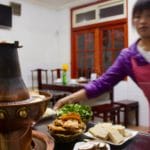 October 6, 2016 Boiling Hot Pot in Beijing
October 6, 2016 Boiling Hot Pot in Beijing
Hot pot is a Chinese favorite and among the culinary treats waiting to be enjoyed on our […] Posted in Beijing April 9, 2018 Bağdat Ocakbaşı
April 9, 2018 Bağdat Ocakbaşı
Istanbul’s T1 tramway is relatively pleasant if you can find a seat, but borders on […] Posted in Istanbul July 23, 2015 Yelo
July 23, 2015 Yelo
Editor’s note: It’s Cool Treats Week at Culinary Backstreets, and today we head to […] Posted in Tokyo
Francesco CiprianoFrancesco Cipriano
Published on December 13, 2023
Related stories
October 6, 2016
BeijingHot pot is a Chinese favorite and among the culinary treats waiting to be enjoyed on our Beijing dinner walk.
April 9, 2018
IstanbulIstanbul’s T1 tramway is relatively pleasant if you can find a seat, but borders on unbearable if you are on your feet. Back in 2015, we wrote about a trip we took from the line’s first stop all the way to one of its last, which lies way out in the district of Güngören. By…
July 23, 2015
TokyoEditor’s note: It’s Cool Treats Week at Culinary Backstreets, and today we head to Tokyo, where a shaved-ice shop keeps 'em lining up late into the night. Yelo, Roppongi’s kakigori (shaved ice) mecca, summoned the faithful with free samples on April 1 like some kind of cool April Fool’s joke for the not-quite-warm weather. The…







































